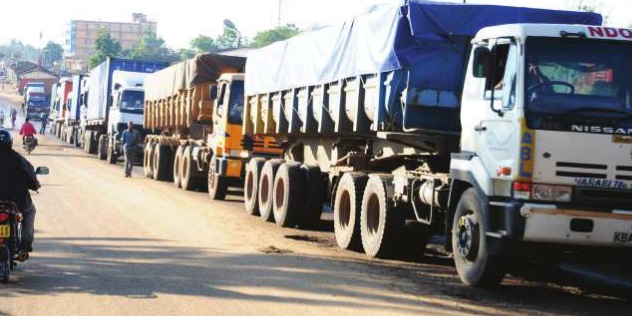Regional trade facilitation organisation to pump between Shs 2.66 – Shs 2.83 trillion in region

On May 31, executives at Trademark East Africa, a not-for- profit organization that supports the East African Community integration process in trade policy reforms and trade-related infrastructure, gathered in Kampala.
The meeting was intended to assess the organization’s performance in the first fiveyear phase, worth $550 million (Shs 1.83 trillion) and announce the exit of its Uganda Country director AllenAsiimwe who is going for further studies at Harvard University.
Frank Matsaert, the TMEA chief executive officer, told stakeholders in regional trade that a lot has been achieved in the past five years but still more needed to realize the true benefits of trade in the region. He revealed that the organisation will invest between $800 million (Shs 2.66 trillion) – $850 million (Shs 2.83 trillion) in the next phase to boost logistics, address non-tariff barriers, and fully automate trade processes especially with the implementation of the Electronic Single Window.
“We have realized that doing trade in the region has been eased with our previous efforts but we need to do more to address the trade imbalances that the governments in the region face,” Matsaert said. “We want to see Uganda exporting more than it imports, and do the rest of the countries in the region.”
Available data from the Finance ministry shows that Uganda’s trade deficit has widened over the past years, surging from $ 2.09 billion (Shs 6.95 trillion) in 2013/14 to $ 2.35 billion (Shs 7.81 trillion) in the subsequent year.
Comparatively, Tanzania’s overall balance of payments recorded a deficit of $ 513.3 million (Shs 1.71 trillion) for year ended April 2015, compared to $ 258.7 million (Shs 860.82 billion) surplus in the corresponding period a year before. Similarly, Kenya’s balance of payment deficit, had a deficit of Kshs 6 billion (Ushs 194.59 billion) in the year to November 2015 down from a surplus of Kshs 87.2 billion (Ushs 2.83 trillion) a year earlier, according to Kenya’s finance ministry. This is based on the fact the East African countries are mainly net importers of various goods and services.
The organisation, currently involved in setting up information centre’s at various border points, also plans to educate women in the region aimed at attracting more in cross-border trade. Through support to the technical working groups and embedded technical experts working to implement the Single Customs Territory-destination model, TMEA’s partnership with the EAC has resulted in significant improvements in trade facilitation through custom’s interconnectivity, simplification of cargo clearance procedures, and a reduction of non-tariff barriers.
Further, the time taken to process and transport goods along the Northern Corridor has reduced by more than a 60% (down from 18 days to 6 days betweenMombasa and Kigali). Also, TMEA has invested in the Standards Harmonization and Conformity Testing Programme across the region, intended to support the National Standards Bureaux (NSBs) in achieving regional harmonization of standards and thus improving trade competitiveness.
But Byron Kinene, the Regional Lorry Drivers and Transporters Association (RLDTA) official, said though TMEA has eased the costs of doing business in the region, there’s need to support the expansion of the online reporting system of Non-Tariff Barriers via text messages in the region.
“With the introduction of the new reporting system in Uganda, the time spent on the roads has tremendous reduced. For instance, it now takes only three days for a truck to move fromMalaba to Oraba, the border with South Sudan, down from seven days,” Kinene said. “We request that the platform be expanded into the rest of the EAC so that drivers are able to send complaints whenever they are in the region in case of troubles.”
Kinene said since the introduction of the new technology that involves sending an SMS to code 201, corruption along Uganda’s major roads associated with traffic police officers had drastically reduced.
Uganda launched the new innovation in August 2014, replacing the manual system where traders or importers recorded NTB’s manually on paper at border points, the scenario that saw delay to resolve trade-related issues.
Ezra Rubando, the head of policy, research and advocacy at the Uganda National Chamber of Commerce and Industry (UNCCI), toldThe Independent that since business procedures have been simplified with automation, it is time for the organisation and the EAC Member States to profile businesses now to boost trade volumes.
“We need to knowwho are the producers and consumers of particular products in these countries including their specific location,” Rubando says, adding that it is currently difficult to locate producers of certain products and to market them due to limited data.
TMEA is funded by a pool of donors including Department for International Development (DFID), Dutch’s Ministry of Foreign Affairs, and the Swedish International Development Cooperation Agency (SIDA).
 The Independent Uganda: You get the Truth we Pay the Price
The Independent Uganda: You get the Truth we Pay the Price



